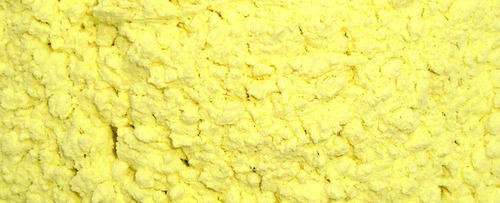Sulfur is one of the most commonly used vulcanizing agents in the production process of reclaimed rubber products. The vulcanized rubber has excellent mechanical properties; when using reclaimed rubber to produce rubber products containing skeleton materials, the adhesion between reclaimed rubber and skeleton materials affects the rubber The performance and service life of the product; when using sulfur vulcanization, the usage and amount of sulfur directly affect the adhesion between the reclaimed rubber and the skeleton material.
1. The effect of sulfur dosage on the adhesion of reclaimed rubber
When sulfur vulcanized reclaimed rubber is used, the adhesion between the reclaimed rubber and the skeleton material is the best after the vulcanization crosslinking reaction speed and the bonding reaction speed are balanced. Therefore, rubber product manufacturers should comprehensively consider the time of cross-linking reaction and adhesion reaction of rubber materials, adjust the type and amount of sulfur and accelerator, and coordinate the relationship between the two. Generally, reclaimed rubber has good bonding performance with skeleton materials such as brass, and there must be polysulfide bonds in the rubber compound. Manufacturers of reclaimed rubber products can control the amount of sulfur at more than 3 parts to improve the adhesion between reclaimed rubber and skeleton materials. sex.
2. The effect of sulfur species on the adhesion of reclaimed rubber
In actual production, too much sulfur will spray out the surface of the product, and frosting will seriously affect the adhesion between the reclaimed rubber and the skeleton material. Therefore, rubber product manufacturers increase the amount of sulfur to improve the adhesiveness of the rubber. It is necessary to reasonably control the amount of sulfur, or use insoluble sulfur to prevent the sulfur from spraying out of the surface and affecting the adhesion of the reclaimed rubber.
3. The effect of sulfur usage on the adhesion of reclaimed rubber
Insoluble sulfur is widely used in the production of reclaimed rubber products containing skeleton materials, which is beneficial to the bonding between reclaimed rubber and skeleton materials. When using insoluble sulfur, rubber product manufacturers need to pay attention to the sulfur storage environment, mixing temperature, and storage of mixed rubber. temperature etc.
①Usually, the storage temperature of insoluble sulfur should not be too high, and should be controlled below 40°C. The place where insoluble sulfur is stored cannot store amine raw materials at the same time. ② When using insoluble sulfur-vulcanized reclaimed rubber for mixing, the mixing temperature should not exceed 95°C. ③The reclaimed rubber mix needs to be stored in a low-temperature, low-humidity environment, and the storage time should not be too long, otherwise the insoluble sulfur will be transformed into soluble ordinary sulfur, causing frosting of the reclaimed rubber mix, which in turn affects the adhesion of the reclaimed rubber .

